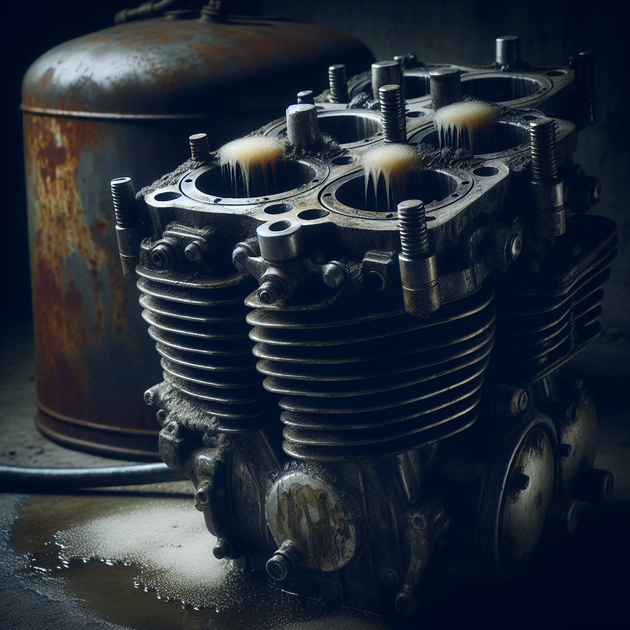Is it even possible for rocks to show up on the engine valves of a motorcycle that’s barely moved in a decade? If you’ve pulled apart an old Kawasaki ZX-6R and found strange crusty bits or “rocks” stuck to the valves—especially just on one cylinder—it can be both confusing and concerning.
Let’s break down why these odd deposits appear on engine valves after years of sitting, what it means for your bike’s health, and the smart steps to fix it before scoring those precious cylinder walls.
Why Do Engine Valves Get “Rocks” or Deposits?
Engine valves are designed to seal off combustion chambers with just thin layers of carbon forming over time. But when a bike like a 2003 Kawasaki ZX-6R sits unused for 10+ years—especially with a rusty fuel tank—strange things can happen.
Here are the main reasons you might find hard deposits (what look like little “rocks”) stuck to the valves in just one cylinder:
- Contaminated Fuel: Rust from an old tank can flake off and travel through the fuel system. Even if injectors seem clear, tiny particles can slip by and end up in the cylinders.
- Moisture Intrusion: Over years of storage, moisture sneaks into the intake or exhaust ports—especially if spark plugs aren’t tight or the airbox isn’t sealed. This can create localized corrosion.
- Cylinder-Specific Issues: If only cylinder 2 shows rocks while others are clean, maybe that spark plug was loose or water pooled there during storage.
- Dried Fuel Additives: Old gasoline turns gummy and leaves behind resin-like junk that turns rock-hard after years without running.
Valve deposits aren’t normal—but they’re not always a death sentence for your motor either.
What Risks Come With Valve Deposits?
Leaving these mystery “rocks” on your engine valves is risky business:
- Valve Seating Issues: Buildup prevents proper sealing, leading to compression loss and misfires.
- Cylinder Wall Scoring: If chunks break loose while running, they’ll get mashed between piston and wall—possibly scoring or damaging them.
- Further Contamination: Debris can float into other cylinders—or clog up new injectors if not fully flushed out.
The good news is that at only 12k miles and no visible cracks in the block, this motor could still have lots of life left if handled right.
How Should You Fix Rocks on Engine Valves?
If you spot hard gunk on just one set of engine valves (like cylinder two), here’s a smart action plan:
- Remove Cylinder Head: It might sound intimidating but pulling the head is often best. This lets you clean all surfaces safely without dropping loose bits into the bore.
- Chemical Cleaning: Use soft brass brushes and mild solvents—avoid harsh scraping that could scratch valve faces or seats.
- Inspect Everything: Check for pitting/corrosion on valve seats; replace any badly damaged parts rather than risk leaks later.
- Treat Fuel System: Since rust from the tank likely caused this mess, replace those leaking injectors (smart move!), flush lines thoroughly, and consider lining/sealing the inside of your tank before refilling.
Anecdote from Similar Bike Owners
One seasoned rider once shared about reviving an old Suzuki that sat forgotten for almost fifteen years. After wrestling with similar “rocky” debris on intake valves (caused by water pooling through a cracked plug boot), he yanked the head off for peace of mind. The effort paid off—the cleaned-up head ran another decade without drama.
Preventing Valve Buildup Next Time
To keep those shiny new (or freshly cleaned) engine valves free from gunk:
- Keep air intakes sealed tightly during long-term storage
- Add fuel stabilizer before parking bikes for months—or drain tanks entirely
- If rust is found in any part of the system, don’t just swap filters; clean everything from tank to injectors
Taking a little extra care now goes a long way toward preserving those internal parts for another twelve thousand trouble-free miles.
So—if you’ve found weird rocky junk stuck to your motorcycle’s engine valves after years of sitting idle—would you pull off the head for a thorough cleaning? Or would you risk running it as-is?

Leave a Reply